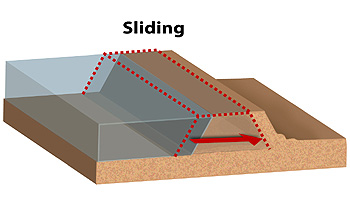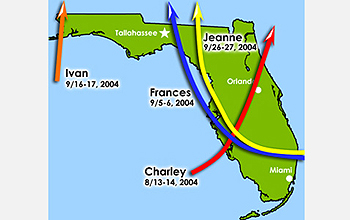All Images
News Release 06-138
National Science Board Proposes Major Initiative in Hurricane Science and Engineering
This material is available primarily for archival purposes. Telephone numbers or other contact information may be out of date; please see current contact information at media contacts.

In August 2004, Hurricane Charley tore apart whole communities of homes and businesses in Punta Gorda, Fla. The National Science Board is proposing new research in hurricane behavior, structural engineering and the built environment, and in power, communications and access systems as part of a National Hurricane Research Initiative.
Credit: FEMA Photo/Andrea Booher

In the wake of Hurricane Katrina, one reason for the 17th Street levee failure was a "lateral sliding" of the levee on the interface between the silty clay and the underlying clay-saturated sand under great water pressure. The National Science Board says among high priority items in a new National Hurricane Research Initiative would be to contribute new knowledge toward improved resilience of the coastal infrastructure and the built environment.
Credit: Zina Deretsky, National Science Foundation

In 2004, Florida became the first state in 118 years to be hit by four major hurricanes.
Credit: Trent Schindler, National Science Foundation


